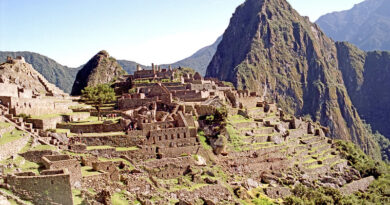Empire of the Seas: The Venetian Empire
The Venetian Empire was a powerful maritime state that existed from the 7th century until the 18th century, centered around the city of Venice in northeastern Italy. It became a significant player in trade and commerce, particularly in the Mediterranean Sea.
Venice was a major hub for trade between Europe and the East, particularly during the Crusades. The city was known for its merchant fleet and had extensive trade networks, dealing in spices, silk, and other luxury goods.
The empire was governed by the Doge, an elected leader, and a council of nobles. Venice was known for its unique political system that combined elements of oligarchy and democracy.
At its height, the empire controlled parts of modern-day Italy, Greece, Croatia, and the islands of the Aegean and Adriatic Seas. Key territories included Cyprus, Crete, and parts of the Dalmatian coast.
The Venetian Empire was a melting pot of cultures, influencing art, architecture, and music. The city is famous for its distinctive architecture, including St. Mark’s Basilica and the Doge’s Palace.
The empire began to decline in the late 16th century due to various factors, including the rise of the Ottoman Empire, competition from other European powers, and changes in trade routes. It ultimately fell to Napoleon in 1797.

*Ports
The Venetian Empire was known for its extensive network of ports and trading sites, which facilitated its dominance in maritime trade. The capital and heart of the empire, Venice was a key port city with a vast network of canals. It served as the main hub for trade and commerce.
Located in modern-day Croatia, Ragusa was a significant trading city and a rival to Venice. The city was known for its maritime laws and trade agreements.
The island of Corfu in the Ionian Sea served as an important naval base and trading post for the Venetians, helping to secure their influence in the region. Another Ionian island, Zante was a vital point for trade, especially in agricultural products and wine.
The island of Crete was under Venetian control for several centuries and served as a crucial trading hub in the eastern Mediterranean. The towns of Chania and Rethymno in Crete were important Venetian settlements
Acquired by Venice in the late 15th century, Cyprus was strategically important for trade routes between Europe and the Near East.
Located in present-day Croatia, Fiume was an important port for trade with central Europe.
The coastal town of Carraromor Kotor in Montenegro was a significant Venetian port, particularly for trade with the Adriatic and inland regions.
Although not a direct Venetian territory, Tunis was an important trading partner and a site for Venetian trade in North Africa.
These sites and ports were integral to the economic and military strength of the Venetian Empire, allowing it to control trade routes and exert influence across the Mediterranean and beyond.

*Galleys
The Venetian Empire was renowned for its impressive naval capabilities, particularly its galleys and ships, which played a crucial role in trade, warfare, and maritime dominance.
Galleys were long, narrow ships powered primarily by oars, with sails for additional speed. They were designed for speed and maneuverability, making them ideal for both trade and naval warfare.
Venetian galleys were used in combat, particularly in the Mediterranean, where they could engage enemy vessels effectively. They were also essential for transporting goods and troops.
Carracks were larger ocean-going ships with a broad hull, developed for long-distance trade. They typically had three or four masts and were equipped with square sails. They were used for trade routes that extended beyond the Mediterranean, allowing Venice to engage in commerce with distant lands.
Fustas were A type of small trading ship, often used along the coasts and in shallow waters. They had a single mast and were typically rigged with lateen sails.They were well-suited for navigating the intricate waterways of the Venetian lagoon.
Biremes and Triremes were ancient warships with two (biremes) or three (triremes) rows of oars. While not exclusively Venetian, they influenced the design of later Venetian galleys. Primarily used in naval battles, these ships provided significant speed and agility.
Brigs and Barques were Smaller vessels used for various purposes, including trade and naval operations. Brigs typically had two masts and were rigged with a mix of square and fore-and-aft sails.These ships were versatile and used for both military and commercial purposes
The Venetian naval fleet was essential for maintaining control over trade routes, projecting military power, and protecting Venetian interests throughout the Mediterranean. The design and construction of these ships were critical to the success of the Venetian Empire’s maritime endeavors.

*Trade
The Venetian Empire was a major hub of trade in the Mediterranean and beyond, dealing in a diverse array of products. Some of the key goods traded by the Venetians included:
Spices:
Venice was a crucial gateway for spices like pepper, cinnamon, cloves, and nutmeg from the East, particularly from India and the Spice Islands (the Moluccas).
Silk:
The trade of silk was highly lucrative, with Venice importing silk from the Byzantine Empire and later from Persia and China. Venetian silk was renowned for its quality and design.
Grains:
The empire imported grains, especially wheat, from regions such as the Black Sea, which were essential for feeding its population and supporting trade.
Textiles:
In addition to silk, Venice traded in other textiles, including wool and cotton, which were woven into high-quality fabrics.
Glass:
Venetian glass, particularly from the island of Murano, was famous for its craftsmanship, and items such as glassware, mirrors, and beads were highly sought after.
Dyes
Venice was involved in the trade of dyes, especially those derived from natural sources, which were used in textiles and artistry.
Jewelry and Precious Metals
The Venetians traded in gold, silver, and precious stones, crafting exquisite jewelry that was popular across Europe and the East.
Honey and Sugar
Honey was a common trade item, as was sugar, which was becoming increasingly popular in European diets.
Wine
The trade of wine, particularly from the Veneto region, was significant, with Venetian merchants exporting various types of wine throughout the empire.
Slaves
The slave trade was also part of Venetian commerce, with slaves being sourced from various regions and sold in markets across the empire.
Fish and Salt:
Venice traded in fish, particularly salted fish, which was a staple in the diet of many Mediterranean communities. Salt was also a valuable commodity, used for preserving food.
Wood and Timber:
Timber was traded for shipbuilding and construction, sourced from various regions, including the Adriatic coast.
The Venetian Empire’s strategic location and extensive trade networks allowed it to thrive economically and culturally, making it one of the most powerful maritime states of its time.
*The Middle East and Beyond:
The Venetian Empire ,or Republic of Venice,had extensive and complex relations with the Middle East shaped by trade, diplomacy, warfare, and cultural exchange. Venice was a major maritime power from the 8th century until its fall in 1797 , and its interactions with the Middle East were crucial to its wealth and influence.
Venice’s relationship with the Middle East was pragmatic—prioritizing trade over religious conflict. While wars occurred, commerce and diplomacy often prevailed, leaving a lasting impact on Mediterranean history.
Venice dominated trade between Europe and the Middle East, dealing in spices (pepper, cinnamon), silk, cotton, dyes, glass, and slaves
Venetian merchants operated in Alexandria (Egypt), Damascus (Syria), Beirut (Lebanon), Constantinople (Istanbul), and the Black Sea.
Venice established trading posts in major Middle Eastern cities, securing privileges through treaties with Muslim rulers.
Venice initially served Byzantium but later competed with it, culminating in the Fourth Crusade in 1204 where Venetians helped sack Constantinople.
Venice maintained strong trade ties with the Mamluks, a dynasty founded by former Moslem slaves who controlled the Midde East for almost 300 years from 1250 to 1517, even as other European powers pushed for crusades.
With the Ottoman Empire, relations were mixed. Trade continued, but wars erupted over a period of nearly 300 years from 1463 to 1718. Venice lost key territories like Cyprus in 1571 and Crete in 1669 to the Ottomans.
*Military Conflicts
Venice played a major role in the **Fourth Crusade , diverting it to Constantinople for commercial gain.
Venice fought multiple wars against the Ottomans, including Siege of Constantinople in 1453. – Venice aided Byzantium but failed to prevent its fall.
At the famous Battle of Lepanto in 1571, Venice joined the Holy League to defeat the Ottomans at sea.
*Cultural Exchange
The Venetian Empire was key to cultural and artistic exchange between the Middle East and Europe .
Venetian architectural styles were influenced by Islamic and Byzantine designs at the Doge’s Palace, St. Mark’s Basilica in Venice.
Arabic and Persian scientific texts reached Europe via Venetian traders.Luxurious gifts, including glassware and textiles were exchanged between rulers.
*Decline of Venetian Influence
By the 18th century Venice lost most of its Middle Eastern holdings to the Ottomans and European rivals.
The rise of Portugal’s sea route to Asia from1498 and later Dutch/British trade dominance reduced Venice’s role.
It was sacked by Napoleon in 1797.
Links: Europe, Middle East and North Africa




